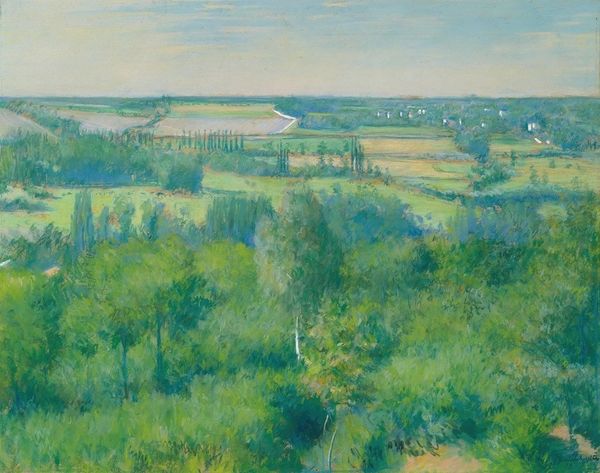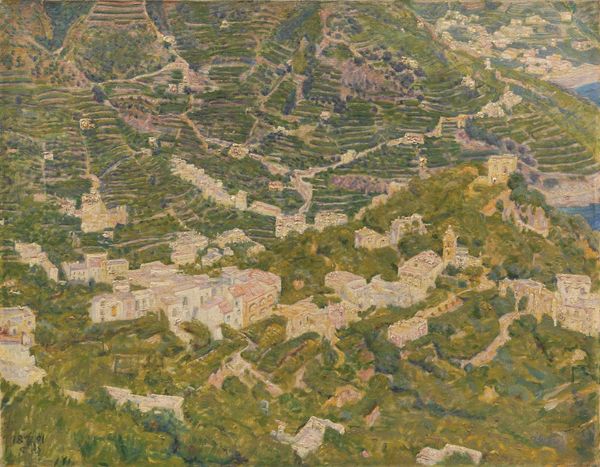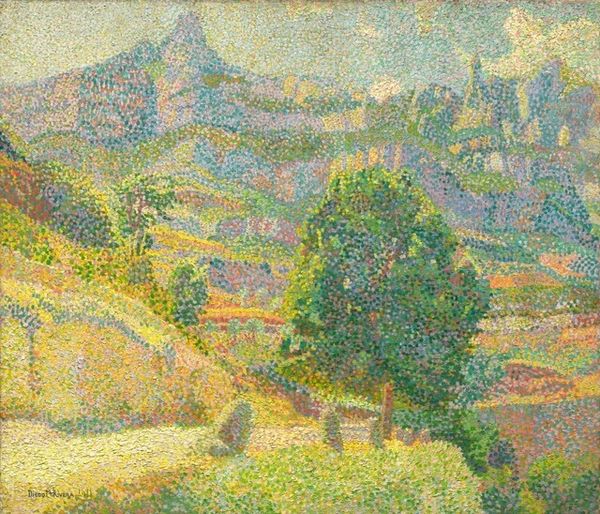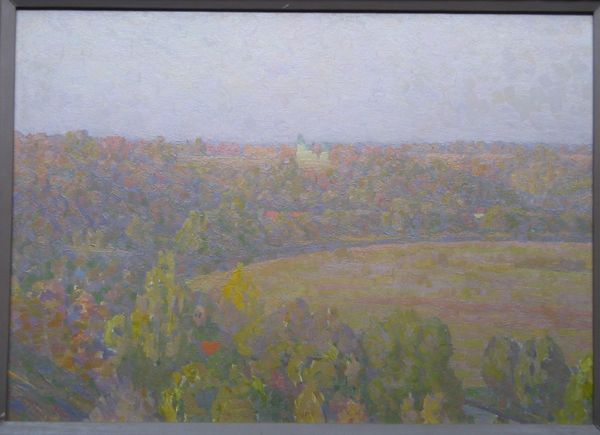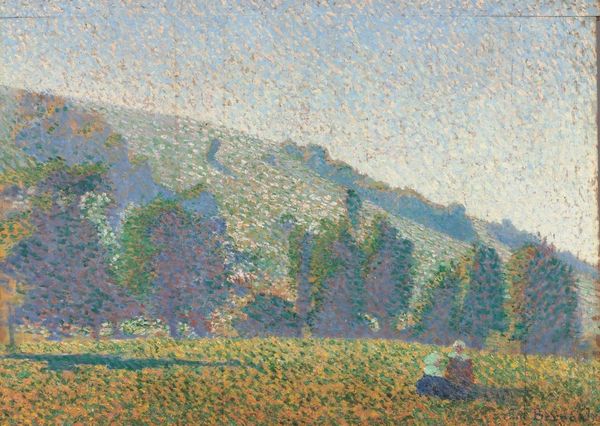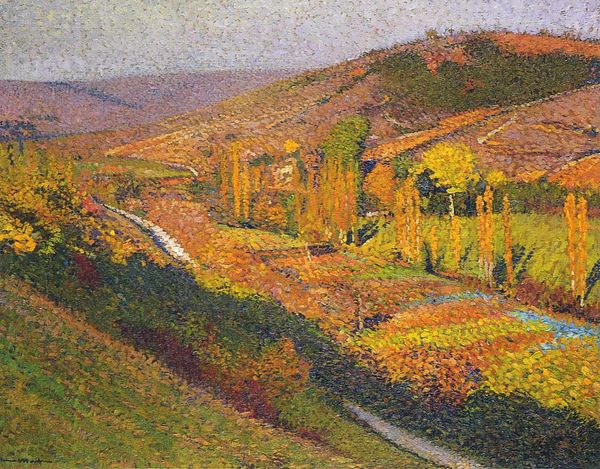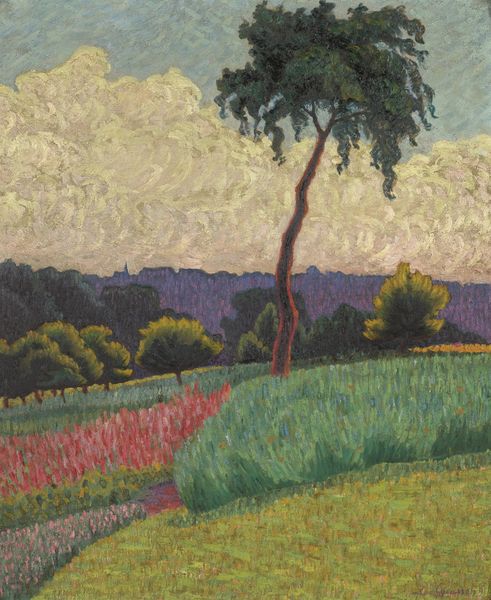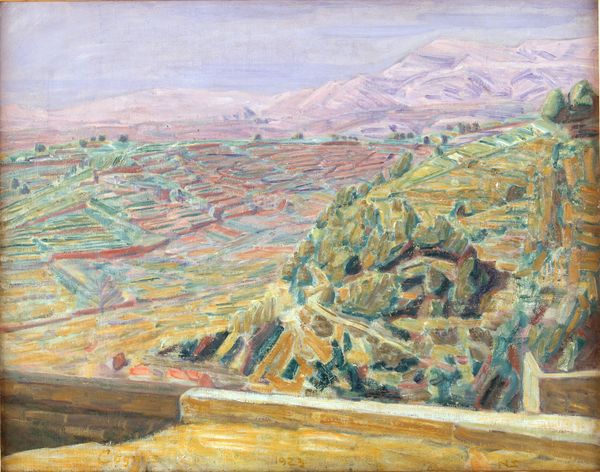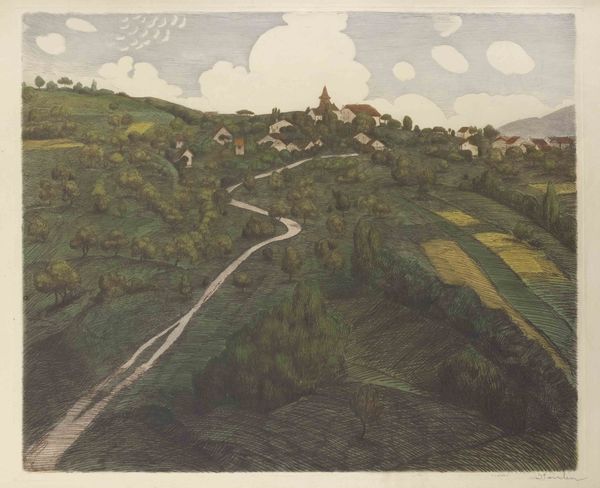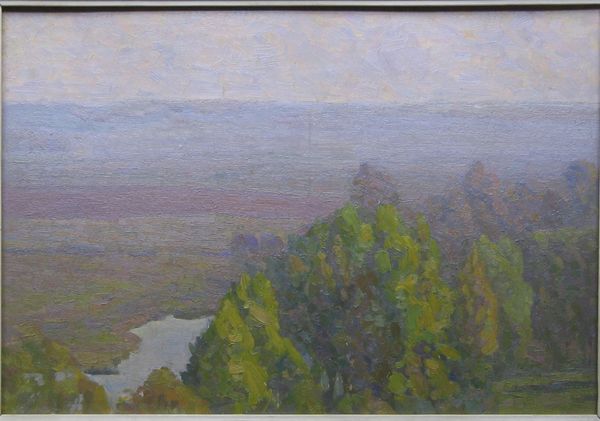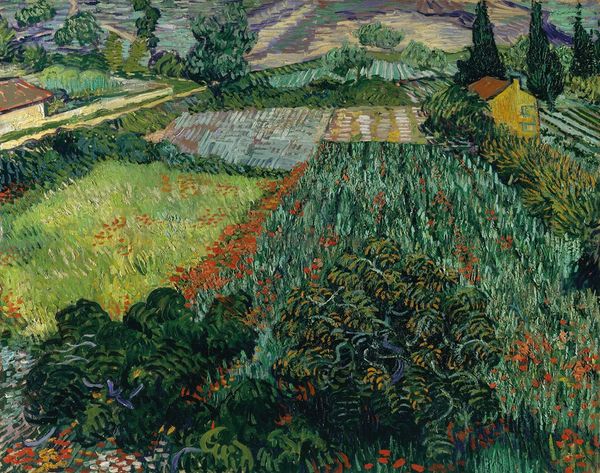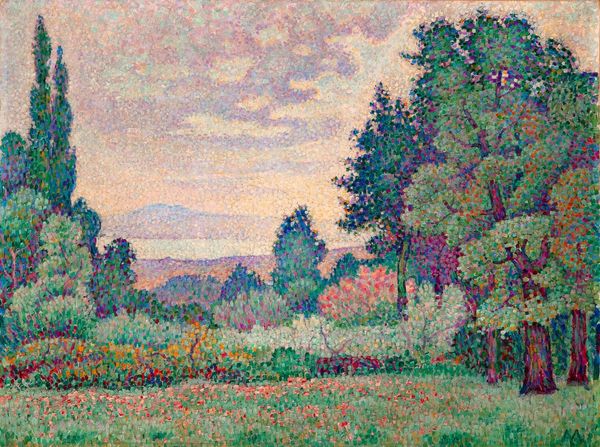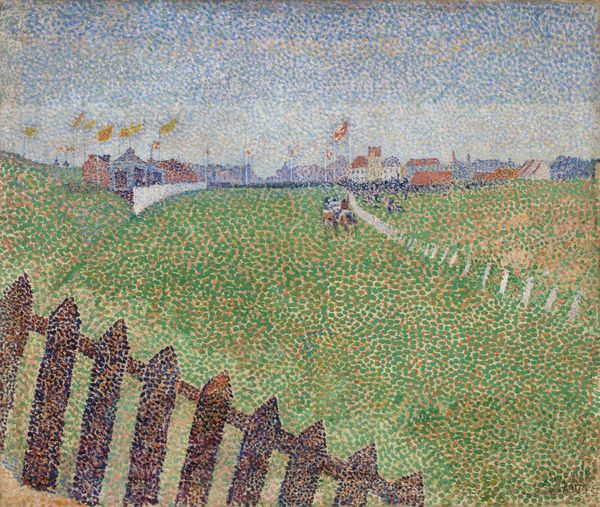
Dimensions: height 80 cm, width 159.5 cm, depth 7 cm
Copyright: Rijks Museum: Open Domain
Curator: Welcome. Let's examine "View of Zoutelande on the Island of Walcheren" painted by Ferdinand Hart Nibbrig sometime between 1900 and 1912. Editor: What strikes me is how dreamlike it feels. The light seems almost… granular. Curator: Indeed. Nibbrig's masterful use of pointillism creates an ethereal quality. The carefully placed dots of colour coalesce into a harmonious whole, yet retain their individuality. Notice how he manipulates the density of these points to suggest depth and atmosphere. Editor: It’s as if the very air is shimmering. I feel the urge to wander right into it, between those sand dunes and into the village. It has the allure of a memory. Curator: Precisely. The high vantage point provides a sense of overview, positioning the viewer as an objective observer, analyzing spatial relationships and the structural rhythm created by the placement of buildings, fields and dunes. Observe, also, the division of space within the plane. Editor: And the colours! Such restrained tones—mainly greens, beiges, and hints of pastel. It creates a beautifully muted yet vibrant landscape, though. Like sunlight seen through mist. Or is that my emotion coloring my judgement again? Curator: Colour is the emotion. Through the application of neo-impressionist colour theory, Nibbrig elicits an emotional reaction that then facilitates comprehension of structural aspects within. Editor: I love how he handles perspective. Everything softly recedes, becoming almost abstract in the distance. That tiny windmill—just a suggestive daub of paint! It adds such charm and perspective to the image. It brings everything together into a single focal view point from this perch in the landscape. Curator: Yes, there’s a tension between realism and abstraction which reinforces the painting’s liminal state of appearing within vision or memory. The materiality is as key here as the thematic intent: without it, our visual understanding would alter severely. Editor: So well put. Looking closely at this piece offers so many different windows. It evokes not only visual splendor but deep thought. Curator: A valuable duality, yes. Thanks for offering your perspective.
Comments
No comments
Be the first to comment and join the conversation on the ultimate creative platform.
